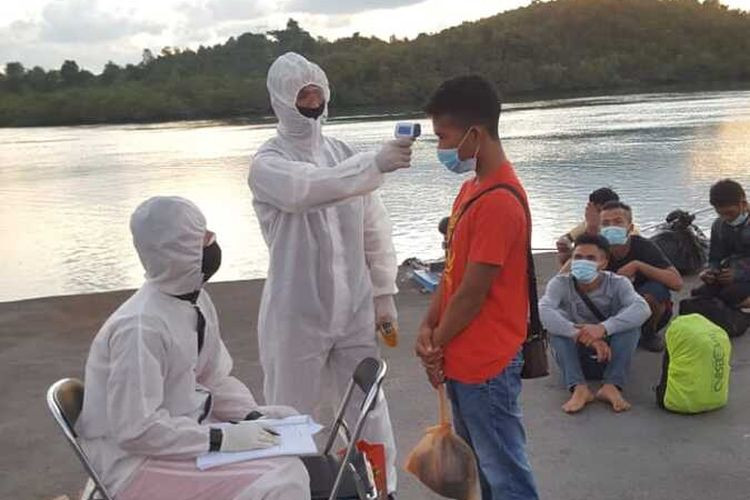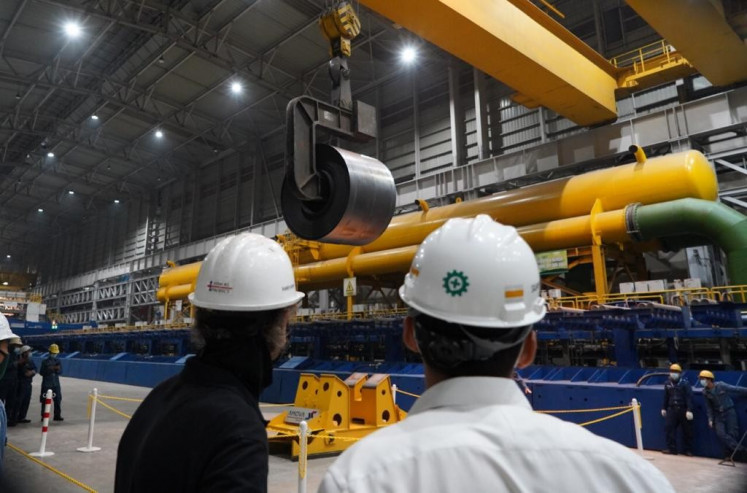Popular Reads
Top Results
Can't find what you're looking for?
View all search resultsPopular Reads
Top Results
Can't find what you're looking for?
View all search resultsAchieving safe, orderly, and regular migration in Asia-Pacific
Migrants have played a critical role as essential workers, particularly in the health sector, food supply, and the formal and informal care economy, in the region and beyond.
Change text size
Gift Premium Articles
to Anyone
M
igrants move in search of safer and better lives. They contribute to the welfare and sustainable development of their countries of origin and destination. Yet, they face complex human rights challenges and vulnerabilities that we must address to ensure that no one is left behind.
In the Asia-Pacific region, the number of international migrants has grown from 52 million in 1990 to over 65 million today, roughly 25 percent of all the world’s international migrants. Notably, 70 percent of all international migrants in Asia-Pacific come from within the region.
Most of the region’s migrants send remittances to families and others in their origin countries. This is important because remittances support household consumption and contribute to poverty reduction. Between 2009 and 2019, remittances to the region rose from US$183 billion to $330 billion, nearly half of the 2019 global total of $717 billion.
But since COVID-19, remittances have declined drastically. Those to Eastern Europe and Central Asia declined over 16 percent from $57 billion in 2019 to $48 billion in 2020. Remittances in East Asia and the Pacific have fallen more than 10 percent over the same period, from $147 billion to $131 billion.
The Asia-Pacific Migration Report 2020 shows that voluntary and involuntary causes drive migration between countries in Asia and the Pacific and in other regions of the world. The primary reason is temporary labor migration. Many people also migrate for education, to escape poverty and inequality, food insecurity and climate change, to reunite with family, or for permanent settlement and retirement. People often move for more than one reason.
Migrants often lack access to essential services, constrained by laws, fees, language barriers, and restrictions related to residency and migration status. Women migrants, especially domestic workers, are particularly at risk of discrimination, violence, abuse, and exploitation. Migration-related child protection risks are also a significant concern throughout Asia and the Pacific.
This week, from March 10 to 12, the Asia-Pacific region reviewed the Global Compact for Safe, Orderly and Regular Migration adopted by United Nations member states in 2018 - a framework, a roadmap, and a call for action for global and regional coordination and cooperation on international migration.
The regional review highlighted the situation of migrants in the region, identified good practices and emerging gaps to making migration safe, orderly, and regular. It provided a platform for countries and stakeholders to compare experiences, learn from each other, and enhance collective action.
We have a unique opportunity for our region to align migration with sustainable development and the effective respect, protection, and fulfillment of the human rights of all migrants, and to mainstream migration into development planning and policies.
By ensuring that the Global Compact delivers on its promise and potential, the review demonstrated the relevance and tangible value of its objectives - for States, migrants and their families, and the community in which they live.
We have a window to achieve safe, orderly, and regular migration in our region. Doing so is critical to achieving sustainable development and realizing human and labor rights. This is all the more urgent, given the imperative to recover better together from the COVID-19 pandemic.
The pandemic has affected all countries in Asia and the Pacific, and its impact on migrants has been devastating. Migrants have been stranded by closed borders and families separated. Large numbers have been returned to countries of origin where many face destitution and lack of access to health care, treatment and support, lost jobs and earnings. Many have faced stigma and discrimination. Migrants in irregular situations and those otherwise in situations of vulnerability have been particularly affected.
For women migrants especially, the pandemic has made them more vulnerable to sexual and gender-based violence as well as trafficking and exploitation. Existing vulnerabilities and lack of access to services have been exacerbated, including migrant children’s access to health, care, treatment and support, education, and access to child protection services.
Yet, migrants have played a critical role as essential workers, particularly in the health sector, food supply, and the formal and informal care economy, in the region and beyond. Migrants will be crucial to countries’ longer-term recoveries, and their contributions to our societies must be recognized and valued. At the same time, every migrant, regardless of their status, is a holder of human rights and this perspective must be central to COVID-19 response and recovery plans.
We must seize the chance to reimagine human mobility as we recover together from the COVID-19 pandemic, using the Global Compact as a practical and concrete tool to address the challenges and reap the opportunities of migration for all. Both now and in the years to come.
***
Armida Salsiah Alisjahbana is the United Nations under-secretary-general and executive secretary of the United Nations Economic and Social Commission for Asia and Pacific (ESCAP). Chihoko Asada-Miyakawa is the International Labor Organization (ILO) assistant director-general and regional director for Asia and the Pacific. Cynthia Veliko is the regional representative, the Office of the United Nations High Commissioner for Human Rights (OHCHR), Asia-Pacific.










